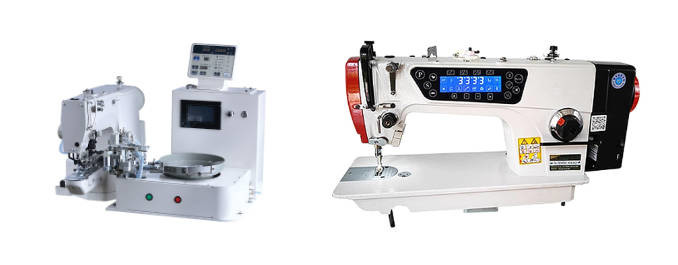Elastic stitching
A conventional elastic seam is created when sewing textile materials using a machine that does not tighten one or more threads, thus creating the possibility of mutual movement and allowing the elasticity of the resulting seam. This solution is workable, but the possibilities to influence the elasticity and its resulting maximum limit are insufficient when using high performance and functional materials.

Elastic sewing technology with defined tension
In the case of a defined prestressing, the seam itself is supplemented by another elastic material (which may be of different types) whose composition and surface physical properties are precisely defined. The properties of this material define the resulting elasticity of the seam. For the application of such material it is necessary to use special auxiliary machines connected to the main machine (most often flatlock or overlock. A 2 or 3 needle machine can also be used. The role of the auxiliary machine is to ensure that the added elastic material is inserted into the seam with sufficient and uniform tension to achieve the desired final properties.
Practical application of elastic seam technology with defined prestressing
In practice, several options are used to properly add elastic material to the seam. Historically, the first was a purely mechanical solution relying on the feed mechanism being driven by the main machine motor. The main advantage of this solution is the low installation and servicing requirements, but the disadvantage is the foot tie to the specific machine. The setup of such a system is also not easy (setup is a service task), at the same time this solution cannot be used for all attachments. Because some of the surface waviness causes jamming and thus uneven preload control.Currently the most advanced technology is the use of a strain gauge element with digital control. This solution provides the most stable prestress over the entire length of the seam. The digital control also allows the connection to the main machine that currently needs this preload. Setting and switching between the different elastic material deposits is very simple and possible directly by the user - without the intervention of a technician.
Technology
We offer industrial sewing machines from global brands such as Juki, Siruba, Brother, Shing Ling. We supply these machines along with strain gauge digital tension control from the best companies in the world such as Yamato or Racing.
Consumable material
The consumable material is mainly elastically inserted material. In this case, various types of rubber or silicone are used. We offer proven mixtures of rubber, silicone and silicone which can also be optionally used on polyester or other bases. All are manufactured in France or Italy.
Would you like more information?
Arrange a personal or telephone consultation with one of our specialists.
